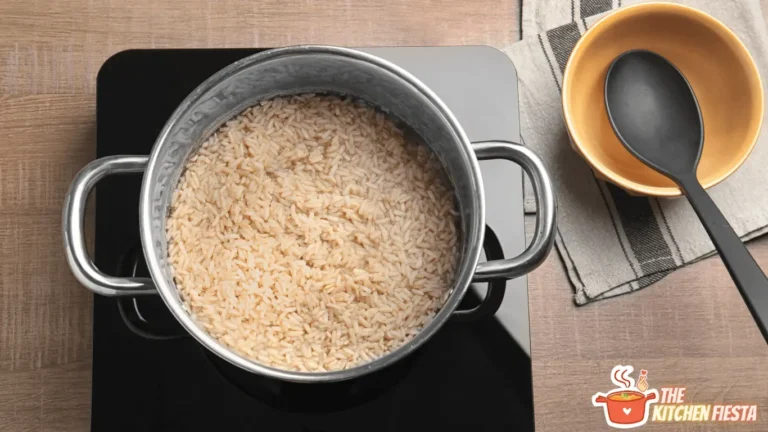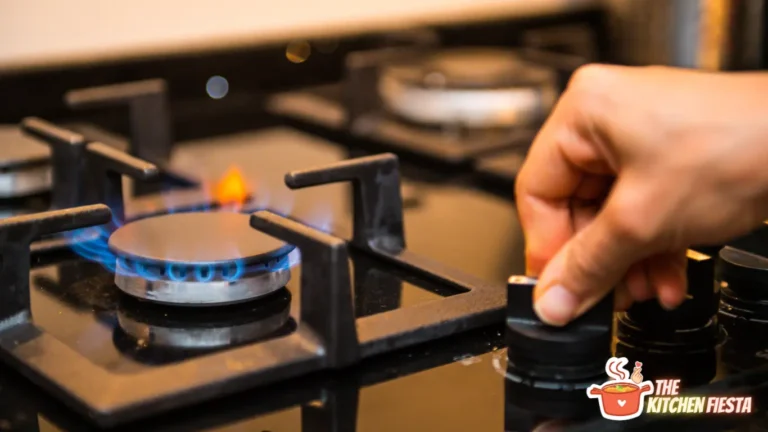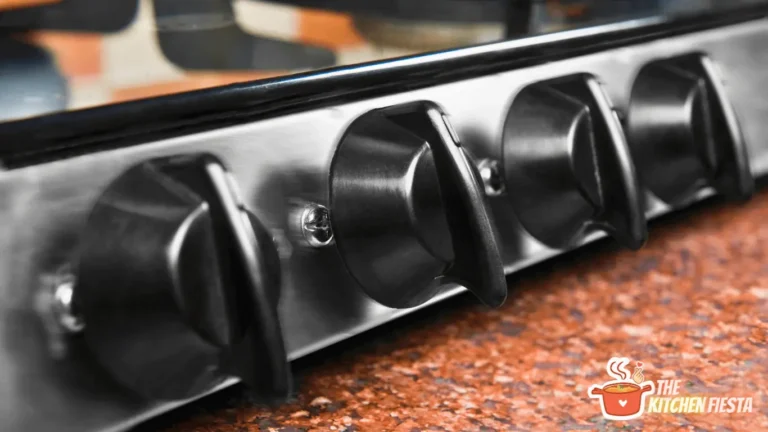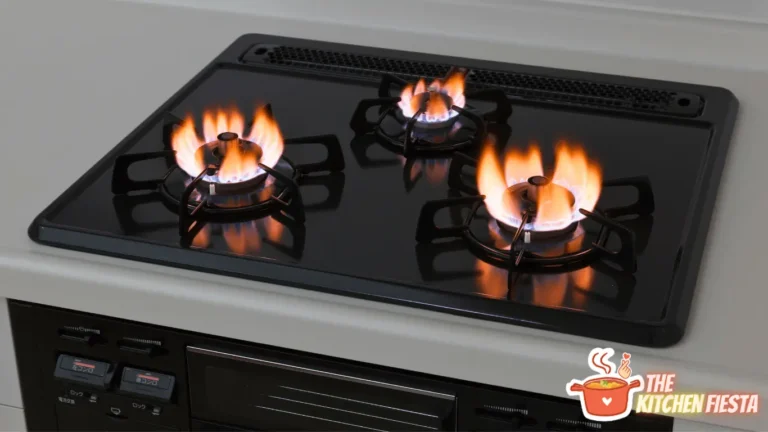Does Induction Cooktop Require 220? The Definitive Answer

An induction cooktop is an innovative cooking appliance that has become increasingly popular recently. One of the most common questions people ask when purchasing an induction cooktop is whether it requires 220 volts to work. The answer is simple: an induction cooktop does not require 220 volts.
Induction cooktops use a particular type of metal pan called a ferrous pan. Placing a ferrous pan on the induction coil creates a magnetic field that heats the pan. The pan itself does not heat, only the food inside it. This means the induction cooktop does not need as much energy as a traditional electric or gas stove, making it a more environmentally friendly option.
Understanding Induction Cooktops
How Induction Cooktops Work
Induction cooktops use magnetic fields to generate heat, so they do not require an open flame or a heated coil. Instead, they use a series of electromagnets located beneath a glass surface. When an electric current passes through the electromagnets, they create a magnetic field that heats the cookware on top of the glass surface.
The heat is generated directly in the cookware, becoming the heating element. This differs from traditional electric or gas stovetops, where the heat is generated in the stovetop and then transferred to the cookware.
Benefits of Induction Cooktops
Induction cooktops have several benefits over traditional stovetops. Here are a few:
- Precise temperature control: Induction cooktops allow for precise temperature control, meaning you can cook your food precisely at the desired temperature. This is especially useful when cooking delicate dishes that require actual temperatures.
- Faster cooking times: Because the heat is generated directly in the cookware, induction cooktops can heat up faster than traditional stovetops. This means that you can cook your food quicker and more efficiently.
- Energy efficiency: Induction cooktops are more energy-efficient than traditional stovetops because they only heat the cookware, not the air around it. This means less energy is wasted, and you can save money on your energy bills.
- Easy to clean: Because the glass surface of an induction cooktop does not get hot, spills and splatters are less likely to stick to it. This means that induction cooktops are easier to clean than traditional stovetops.
Power Requirements for Induction Cooktops
1. Voltage and Amperage
Induction cooktops require a specific voltage and amperage to function correctly. Most induction cooktops are designed to work on a single-phase 220-240 V AC, 50-60 Hz power supply. The amp requirement of an induction cooktop can vary depending on the size of the cooktop. For example, a 60 cm induction cooktop may require 20 amps, while a more oversized 81-91 cm induction cooktop may require 42 or 48 amps.
2. Need for 220 Volts
An induction cooktop does not necessarily require a 220-volt connection but is recommended. A 220-volt reference typically provides a current of 20 to 40 amps, which is more than enough to power an induction cooktop, even a larger one. Most induction cooktops require a 240-volt circuit protected by 40 or 50-amp breakers because of the high amperage needed.
It is important to note that the type of wiring in your home and the induction cooktop model you have can affect the power requirements. In some cases, specific voltage or amperage requirements may be necessary. However, in gendered 220-volt connection should be stuff generally efficient to power most induction cooktops.
Installation of Induction Cooktops
There are two main options when installing an induction cooktop: professional installation or DIY installation.
Professional Installation
For those who do not need more confidence in electrical or DIY skills, hiring a professional to install the induction cooktop is highly recommended. Professional installation ensures that the cooktop is installed correctly and safely.
Professional installation typically involves an electrician installing a dedicated circuit for the induction cooktop. Most full-size induction cooktops require a 240-volt connection, so it is essential to ensure that the home’s electrical system can handle this type of connection.
The cost of professional installation can vary depending on the electrician and the complexity of the building. However, it is essential to remember that professional installation costs a small price for the safety and peace of mind that comes with a properly installed induction cooktop.
DIY Installation
For those comfortable with electrical work and DIY projects, installing an induction cooktop can be manageable. However, it is essential to remember that working with electricity can be dangerous, so safety should always be the top priority.
Before starting the installation process, it is essential to follow the manufacturer’s instructions closely. It is also necessary to ensure that the home’s electrical system can handle the 240-volt connection required by most full-size induction cooktops.
DIY installation typically involves installing a dedicated circuit for the induction cooktop and connecting the cooktop to the course. Ensuring all connections are secure and the cooktop is appropriately grounded is essential.
Safety Measures for Using Induction Cooktops
Proper Wiring
Induction cooktops require a 220-volt electrical connection, unlike the standard 110-volt electrical outlets commonly found in homes. It is essential to ensure that the wiring in your home is compatible with the induction cooktop before installing it.
Suppose your home needs the proper wiring. In that case, it is recommended that you hire a licensed electrician to install the necessary wiring. This will ensure that your induction cooktop operates safely and efficiently.
Precautions While Using
While induction cooktops are generally safe to use, there are a few precautions that should be taken to ensure safe operation:
- Always use cookware that is compatible with induction cooktops. Induction cooktops work by creating a magnetic field that heats the cookware. Cookware made from cast iron and stainless steel works best with induction cooktops.
- Avoid placing anything on the cooktop surface while it is in use. Induction cooktops only heat the cookware, not the character itself. Putting anything on the surface can cause it to overheat and cause a fire.
- Keep the cooktop surface clean and free of any debris. Any debris on the surface can interfere with the magnetic field and cause the cookware to heat unevenly.
- Do not touch the cookware or the cooktop surface immediately after cooking. Induction cooktops can remain hot for a short period after cooking has finished.
Conclusion
In conclusion, an induction cooktop does not necessarily require 220 volts to function. Instead, it requires a ferrous pan to create a magnetic field that heats the food inside it. However, most induction cooktops require a 240-volt circuit protected by 40 or 50-amp breakers because of the high amperage needed.
It is important to note that the wiring in one’s home and the model induction cooktop model affect its power requirements. Therefore, it is recommended to check the manufacturer’s specifications and consult a licensed electrician to ensure the induction cooktop is appropriately installed and wired.
While induction cooktops offer several advantages over conventional electric and gas ranges, including energy efficiency and faster cooking times, they also have some drawbacks. For instance, they require specific types of cookware, which can be more expensive than other ranges.
Overall, purchasing an induction cooktop should be based on individual needs and preferences. By considering the pros and cons and consulting with a professional, one can decide whether an induction cooktop is the right choice for their kitchen.
Frequently Asked Questions
What electrical requirements are necessary for a Bosch 36” induction cooktop?
The Bosch 36” induction cooktop requires a 240-volt circuit protected by a 50-amp breaker. Following the manufacturer’s instructions and consult with a licensed electrician to ensure proper installation is essential.
Do all induction cooktops require 240 volts?
Most induction cooktops require a 240-volt circuit protected by a 40 or 50-amp breaker because of the high amperage needed. However, some smaller portable induction cooktops may operate on 120 volts.
Can induction cooktops run on 110 volts?
Induction cooktops typically require a higher voltage than 110 volts to operate. However, some smaller portable induction cooktops may operate on 120 volts.
What is the power requirement for a portable induction cooktop?
The power requirement for a portable induction cooktop may vary depending on the specific model. However, many portable induction cooktops require a standard 120-volt electrical outlet and may draw anywhere from 1300 to 1800 watts of power.
What size breaker is needed for an induction cooktop?
Most induction cooktops require a 240-volt circuit protected by a 40 or 50-amp breaker. It is important to follow the manufacturer’s instructions and consult with a licensed electrician to ensure proper installation.
Do induction cooktops require special wiring for installation?
Induction cooktops may require special wiring for installation, depending on the specific model and electrical requirements. Following the manufacturer’s instructions and consult with a licensed electrician to ensure proper installation is essential.






